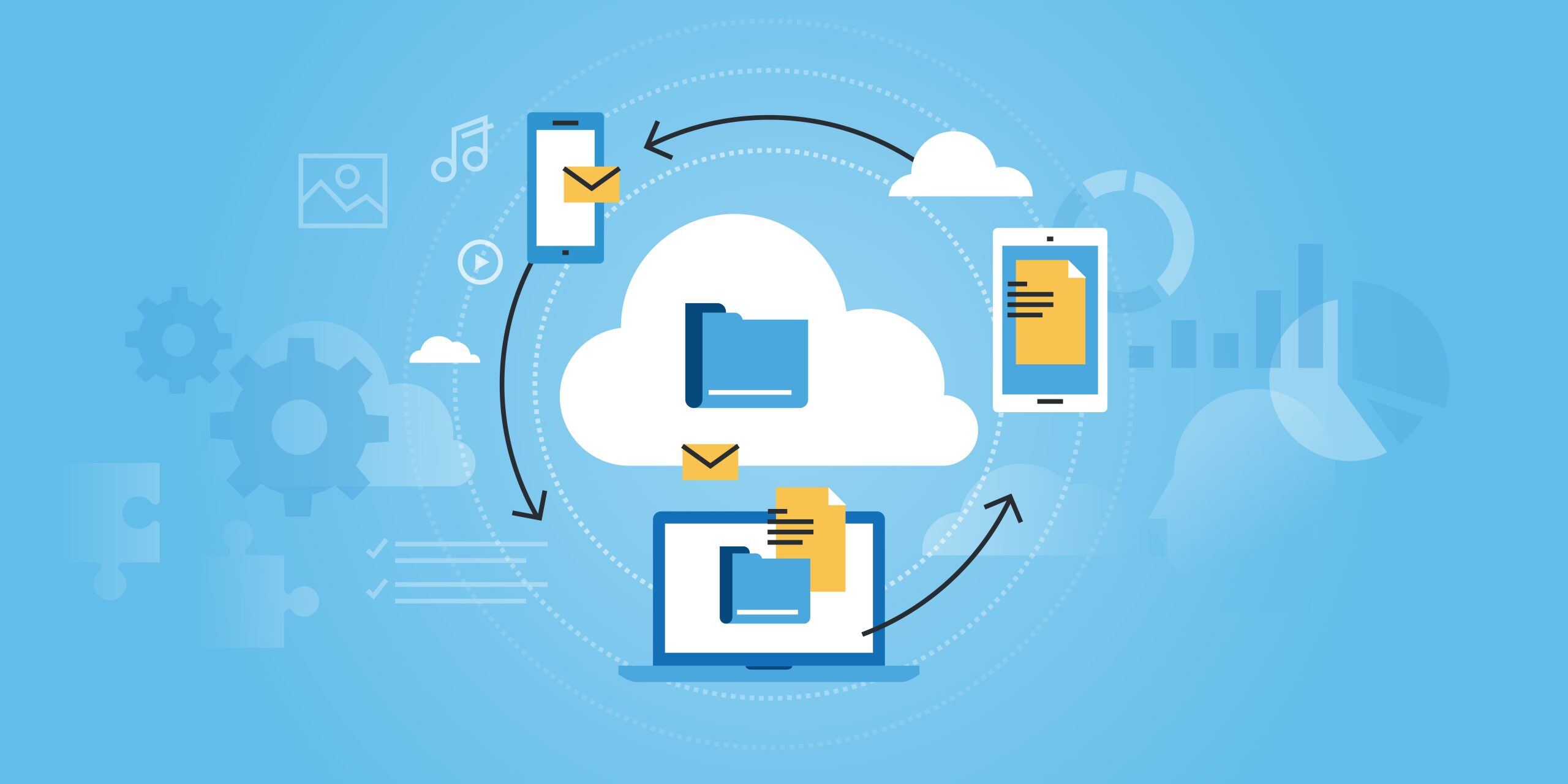TL;DR - MPLS vs SD-WAN
- SD-WAN uses software to route traffic across multiple links (broadband, LTE/5G, DIA, and even MPLS) with centralized control, strong cloud access, and easier scaling.
- SD-WAN tradeoffs include higher configuration complexity, reliance on internet quality, and potential need for added security layers.
- MPLS uses private, carrier-managed circuits with predictable performance, QoS, and reliability, making it strong for latency-sensitive voice and video.
- MPLS tradeoffs are higher cost, slower provisioning, vendor lock-in, and less efficient cloud connectivity due to backhauling.
- Many teams go hybrid, using MPLS for mission-critical traffic and SD-WAN for cost-effective internet access, optimization, and automatic failover.
MPLS vs SD-WAN: A Brief Comparison
MPLS is a traditional private network service built for consistent connectivity and controlled paths, while SD-WAN is a virtualized, app-aware routing layer that optimizes traffic across multiple connections. SD-WAN typically suits cloud-centric networks and rapid scaling, while MPLS still fits use cases needing guaranteed, stable performance.
Providers have been touting SD-WAN as the best network management solution for the past few years, while others argue that traditional MPLS solutions still reign supreme. But while MPLS remains a fixture for many large enterprises, it’s clear that SD-WAN is gaining ground. SD-WAN adoption grew by 47% last year1 – and experts predict 92% of companies will implement an SD-WAN solution by 2026.2
Regardless of the hype, SD-WAN and MPLS solutions each offer unique advantages and drawbacks. In this blog, we’ll break down the biggest differences between these networking approaches and what each can offer your business to help you make an informed choice.
What Is SD-WAN? (Software Defined Wide Area Networking)
Software-defined wide area networking (SD-WAN) is a software-based approach to network connectivity that leverages multiple transport services, including broadband, LTE/5G, and traditional dedicated internet connections to manage the WAN.
SD-WAN solutions offer centralized control and visibility across the entire network infrastructure, making it easier for businesses to scale, optimize cloud connectivity, and ensure superior network performance. They also enable organizations to prioritize business traffic and send data using the fastest, most reliable, and cost-effective path available.
How SD-WAN Works
SD-WAN architecture works by abstracting the top layer of the physical network transport and using software-defined policies to determine how traffic will traverse the WAN. Administrators can segment network traffic by application, user, device, location, and other criteria and manage policies defining the optimal path for each using a central controller that pushes out configuration settings.
Most SD-WAN solutions create virtualized overlays to route traffic through in the form of end-to-end encrypted tunnels. These tunnels let users within the organization connect directly to cloud-based applications and systems, reducing the attack surface compared to a traditional WAN architecture.
What Is MPLS? (Multiprotocol Label Switching)
Multiprotocol label switching (MPLS) is a circuit-switched network solution that relies on physical connections and a private network. It transmits traffic over a fixed path through dedicated network circuits operated by telecom carriers, allowing efficient data routing through complex networks.
MPLS circuits have long been considered the standard in networking technology, as they provide predictable performance, reliability, and security. However, as more organizations move to the cloud, MPLS connections may not provide the flexibility or agility needed to secure the expanding network perimeter or provide an optimal user experience.
How MPLS Works
MPLS networks direct traffic using dedicated, private line connections rather than the public internet. They establish predetermined routes called label-switched paths (LSPs) that forward data packets based on labels instead of network addresses, making MPLS well-suited for applications requiring high bandwidth, low latency, and consistent quality of service.
To set up an LSP, routers at each node in the network infrastructure map out the best path for data to travel and inject a label into the packet header. Once MPLS traffic reaches its destination, the receiving router removes the label, revealing the original IP address so that data can be routed to its final destination.
3 Key Advantages Of SD-WAN & MPLS
SD-WAN and MPLS solutions offer distinct advantages, and understanding their benefits is critical to making the right choice for your organization. Here are the biggest advantages of using each:
SD-WAN Advantages
Scalability – SD-WAN solutions make it easy to adjust bandwidth capacity as your company adopts more cloud-based applications. It also allows network administrators to quickly add new locations or users as needed via the centralized controller.
Cost Savings – Businesses that deploy SD-WAN see operational cost savings of 38% on average.3 SD-WAN reduces costs by leveraging affordable internet connections and reducing dependence on costly MPLS circuits.
Cloud Integration – SD-WAN offers direct internet access, so connecting to your company’s cloud resources is fast. It also offers visibility into cloud application performance, network usage, and other insights to help optimize connectivity.

MPLS Advantages
Consistent Performance – MPLS networks provide consistent, predictable performance backed by QoS and uptime guarantees, which is ideal for latency-sensitive voice and video traffic.
Security – MPLS is delivered over a private network, so it offers inherent security as your data is less exposed to the public internet.
End-to-End Control – MPLS provides end-to-end control over network traffic, which means your administrators can design and manage the network to meet specific performance and security standards.
3 Key Disadvantages Of SD-WAN & MPLS
While both SD-WAN and MPLS bring their unique advantages to the table, they also come with certain drawbacks that may influence your decision-making.
SD-WAN Disadvantages
Complexity: SD-WAN solutions can be complex to manage, given the many settings, features, and policies to configure. This complexity can increase the risk of misconfiguration, potentially leading to network performance issues or security vulnerabilities.
Dependence on Internet Quality: Unlike MPLS, SD-WAN connections rely heavily on the quality of your internet connections. Any instability in your internet services could negatively affect your SD-WAN solution’s performance and the user experience.
Security Concerns: Although SD-WAN offers traffic segmentation and encryption, its reliance on publicly accessible internet can create security risks for your business. Additional integrated security measures may be needed, potentially increasing complexity and costs.
MPLS Disadvantages
High Cost – Each MPLS connection can be significantly more expensive than broadband internet connections. And since these networks rely on physical MPLS circuits, adding more circuits or connecting to geographically distant sites often comes with a hefty price tag.
Vendor Lock-In – Switching away from your MPLS provider typically means a forklift upgrade, creating high switching costs – not to mention lock-in with your next provider.
Limited Cloud Access – MPLS connections aren’t optimal for cloud services. Traffic to and from the cloud needs to be backhauled through a central data center, leading to higher latency and more inefficiencies.
Feature Comparison Of SD-WAN & MPLS In 8 Key Areas
So, which WAN architecture is right for your organization? Here are the main differences between SD-WAN and MPLS:
Network Architecture
SD-WAN enables businesses to use internet transports like broadband and mobile networks along with MPLS. MPLS relies exclusively on private network transports operated by carriers.
Cost
SD-WAN networks can take advantage of lower-cost internet connectivity while gaining the same performance and reliability as MPLS. MPLS technology requires investment in dedicated connectivity, which is generally much more expensive.
Implementation
SD-WAN appliances are typically deployed by your service provider, and configuring settings and policies can be handled via the centralized controller. Setting up and configuring traditional MPLS networks often requires specialized knowledge and expertise, leading to higher setup costs and longer deployment times.
Resiliency
Unplanned downtime costs businesses around $5,600 per minute on average.4 Since a software-defined wide area network uses multiple active links for automatic failover, it may offer more resiliency in the event of a network disruption. MPLS also provides redundancy through secondary paths, but these are typically inactive until needed.

Agility
SD-WAN connections allow organizations to quickly scale bandwidth, add new locations, implement policies, and adjust application-centric policies across the network. MPLS networks require complex provisioning through carriers.
Performance
SD-WAN implements features like caching, compression, and shaping to optimize performance over internet transports. MPLS links provide predictable uptime, latency, and quality of service through SLAs.
Security
SD-WAN overlays secure connectivity over internet links, while dedicated MPLS circuits offer inherent privacy through separation from the direct internet. However, SD-WAN encryption provides a comparable level of security.
Cloud Integration
SD-WAN simplifies and optimizes access to cloud environments, including IaaS and SaaS applications. Connecting MPLS to the cloud is possible but requires additional components like virtual routers and gateways.
Things To Consider When Choosing SD-WAN Or MPLS
Determining whether SD-WAN or MPLS best fits your business will depend on several factors. Consider asking these questions when comparing the pros and cons of each solution:
What’s Our Budget?
MPLS is known for its higher costs due to dedicated lines and equipment. Can your budget accommodate these expenses, or are you looking to optimize costs? SD-WAN uses inexpensive public internet links instead of dedicated network connections, which can mean huge savings – especially if you have a lot of branch offices.
How Scalable Does Our Network Need To Be?
Consider your organization’s growth plans. Will you need to add new locations or increase network capacity regularly? SD-WAN offers painless growth since you just have to deploy more devices and buy more bandwidth. Scaling MPLS bandwidth requires you to contact your carrier whenever you want more connections.
Do We Need Real-Time Traffic Optimization?
If your teams depend on applications that need real-time data transmission for optimal user performance, you might want to consider SD-WAN for its real-time traffic optimization capabilities. MPLS offers low-latency performance but may not have the same adaptability.
What Are Our Security Requirements?
MPLS provides high levels of security thanks to its private nature, but the next-gen firewalls offered by many SD-WAN solutions deliver advanced protections that an MPLS connection can’t match. Before choosing a solution, make sure it meets your specific security needs.
How Much Do We Rely On Cloud Services?
The global cloud computing market is projected to reach more than $947 billion by 2026,5 so it’s likely you’ve already embraced the cloud in some capacity. SD-WAN is designed to integrate with cloud platforms efficiently, while MPLS technology typically requires additional components to offer a similar level of cloud connectivity. Consider how your chosen solution aligns with your cloud needs.

Can Businesses Use SD-WAN & MPLS Together?
Yes, it is possible to use both MPLS and SD-WAN together to get the best of both worlds. Here are a few ways businesses deploy them together:
Overlay SD-WAN On Top Of MPLS
If you already have an MPLS network, you can overlay the SD-WAN solution on top to gain features like application visibility, centralized management, and intelligent path selection across your MPLS and public internet links.
Leverage MPLS For Mission-Critical Traffic
Businesses may route latency-sensitive voice and video over MPLS while using SD-WAN for general internet traffic over more affordable broadband and LTE links.
Provide Backup For MPLS
SD-WAN can use public internet connections to provide automatic failover and redundancy if the primary MPLS circuit goes down to help your business maintain uptime at a lower cost.
Take A Hybrid WAN Approach
If your business has geo-dispersed branches, you can connect smaller sites via SD-WAN over an internet connection and larger offices using MPLS for extra reliability and performance where needed.
Get Help From Our Experts For SD-WAN & MPLS Solutions
Choosing between SD-WAN and MPLS is a strategic decision that requires careful consideration of your business’s unique needs. No single solution is one-size-fits-all, and each offers advantages and disadvantages.
If you’re struggling to find the best option for your organization, working with a trusted provider like CommQuotes can help. We’ll leverage our long-standing relationships with trusted SD-WAN and MPLS providers to get you the best pricing, support, escalation, and insider access – all at no cost to you.
Ready to take the next step? Contact our networking experts today for the industry expertise and experience you need to find a networking solution that meets your needs at better-than-direct pricing.
SD-WAN vs MPLS: Frequently Asked Questions (FAQs)
What Is The Difference Between SD-WAN & MPLS?
SD-WAN (Software-Defined Wide Area Network) is a virtualized network overlay that uses software to manage and optimize traffic across multiple internet connections. MPLS (Multiprotocol Label Switching) is a traditional private network technology that routes traffic efficiently through a dedicated, high-performance infrastructure.
Which Is Better, SD-WAN Or MPLS?
It depends on your needs. SD-WAN is more flexible, cost-effective, and better suited for cloud applications, while MPLS provides highly reliable, low-latency connections ideal for real-time applications like VoIP.
Is SD-WAN Replacing MPLS?
SD-WAN is increasingly replacing MPLS in many enterprises due to its lower costs, improved cloud performance, and agility. However, MPLS still remains relevant for industries requiring guaranteed service levels and ultra-low latency.
Is SD-WAN More Secure Than MPLS?
SD-WAN includes built-in security features like encryption, firewall capabilities, and threat detection, whereas MPLS is inherently private but lacks advanced security layers. For the best security, SD-WAN can be combined with SASE (Secure Access Service Edge) solutions.
Does SD-WAN Offer Better Performance Than MPLS?
SD-WAN optimizes performance by dynamically selecting the best path for data traffic across multiple connections. While MPLS provides consistent latency, SD-WAN ensures better application performance by prioritizing traffic and leveraging multiple network paths.
Which Is More Cost-Effective, SD-WAN Or MPLS?
SD-WAN is typically more cost-effective because it uses public internet connections instead of expensive private MPLS circuits. Businesses can reduce networking costs while maintaining or improving performance.
Is SD-WAN Suitable For VoIP & Real-Time Applications?
Yes, modern SD-WAN solutions prioritize real-time applications like VoIP and video conferencing by using QoS (Quality of Service) and path selection to minimize packet loss and latency. However, MPLS may still be preferred for highly sensitive real-time traffic.
Does SD-WAN Improve Cloud Application Performance?
Yes. Unlike MPLS, which routes traffic through data centers, SD-WAN enables direct access to cloud applications like Microsoft 365, AWS, and Google Cloud, reducing latency and improving user experience.
How Do I Choose Between SD-WAN & MPLS?
Choose SD-WAN if you prioritize cloud access, cost savings, flexibility, and security.
Choose MPLS if you require dedicated bandwidth, low-latency connections, and high SLAs (Service Level Agreements).
Sources:
- https://www.sdxcentral.com/articles/analysis/sd-wan-by-the-numbers-market-size-growth-adoption/2023/08
- https://www.businesswire.com/news/home/20210526005086/en/Masergy-Releases-2021-State-of-SD-WAN-Study
- https://www.cisco.com/c/m/en_us/solutions/industries/government/new-government-landscape-of-networking.html
- https://www.forbes.com/sites/forbestechcouncil/2022/08/26/how-to-guard-against-the-cost-of-unplanned-downtime-and-network-outages
- https://www.businesswire.com/news/home/20211112005486/en/Global-947.3B-Cloud-Computing-Market-Outlook-2026-by-Service-Model-Deployment-Model-Organization-Size-Vertical-and-Region—ResearchAndMarkets.com

%20DIA%20Networking%20Explained/commquotes-feat-whatisDIA.jpg)

